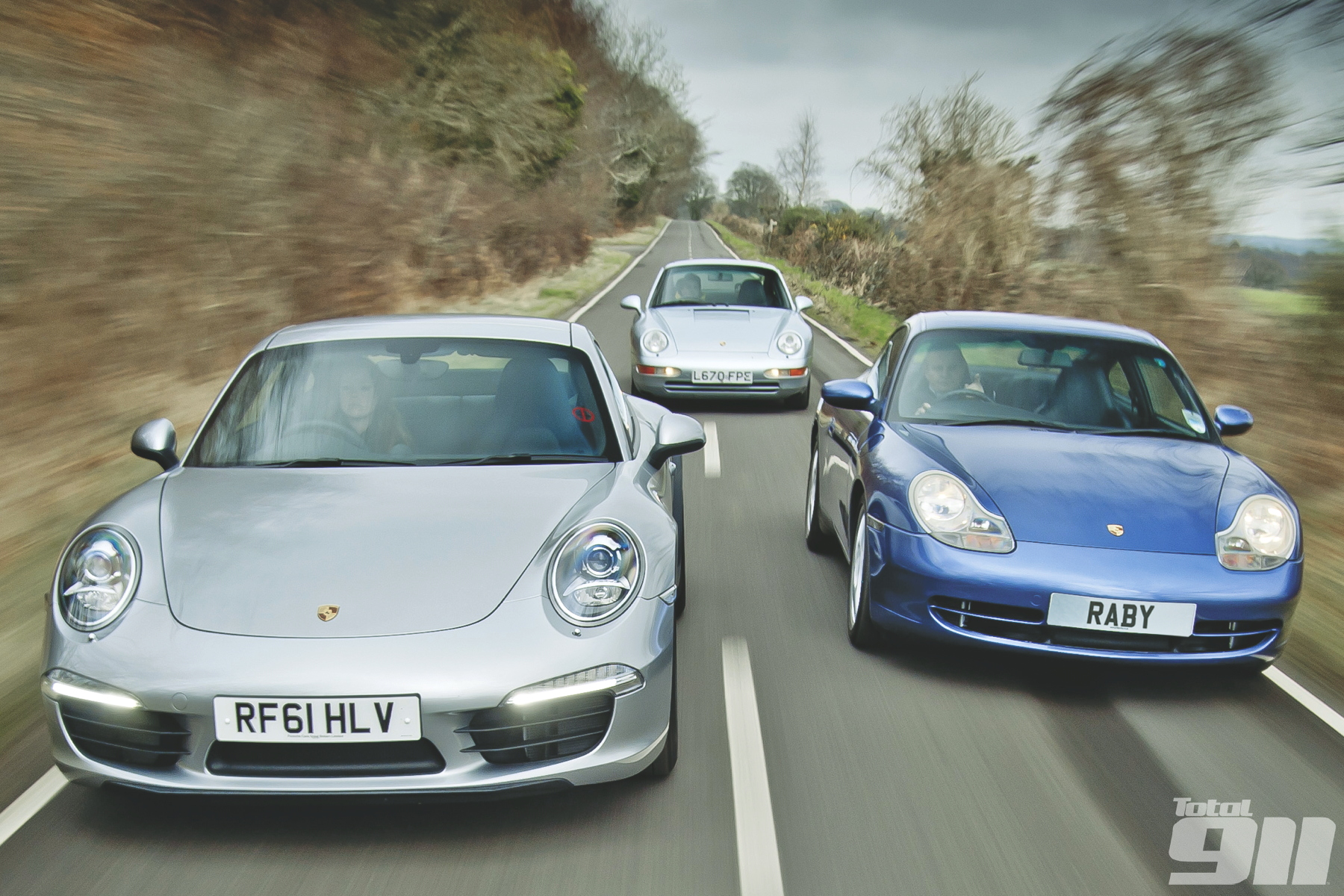Opinion: Why the 991 is a bigger Porsche 911 revolution than the 996
The covers are pulled off and the crowd falls into a stunned silence. Gone are the circular headlights that had survived since the Porsche 911’s genesis in 1963, replaced by some curved units that share more than a passing resemblance to a pair of fried eggs.
Wendelin Wiedeking then steps forward and begins singing the praises of the new Porsche 911’s water-cooled flat six engine. “Water-cooled?” The whispers grow among the assembly of international journalists before they frantically pen a single word into their complimentary notepads: ‘Revolution’.
Okay, so this isn’t how the launch of the Porsche 996 really went in 1998 but its how I like to imagine such a radical change to the 911 concept was received after 35 years of air-cooled flat sixes.
Coupled with its divisive aesthetics (which were revised for the second generation in 2001) and the fact that around 50 per cent of its components were shared with the then-new Porsche Boxster, it was no wonder that the Porsche 996 was a hard pill to swallow for Zuffenhausen traditionalists.
As the first Porsche 911 of a brave new era, the 996 has come in for its fair share of flack, gaining an unfavourable reputation that hasn’t been helped by the M96 engine’s ability to randomly grenade itself because of the IMS design flaw (a thankfully rare occurrence).
However, for all its revolutionary spirit, the change from Porsche 993 to 996 is, in my opinion, nowhere near the jump that has been made graduating from the Porsche 997 to the latest 991-type generation. Here’s why…
The Porsche 993 feels immeasurably more modern to drive than its own predecessor the 964. Because of this, while the Porsche 996 has an abundance of grip, it didn’t feel like such a huge dynamic step (even if the water-cooled powerplant was noticeably more advanced).
By comparison, stepping from a Porsche 997 (even a second generation one) into a new Porsche 991 is a completely different dynamic ball game. With an extra 100mm in the wheelbase compared to the 996 and 997, the Porsche 991 has dramatically shifted the weight balance towards the car’s centre.
This has markedly improved the car’s balance, while the abundance of electronic controls prevalent in the 991 make things like trail braking (a potentially risky business in the 997) second nature. Get it wrong and the excellent aids will often catch you.
Throughout the 21st Century, Porsche has been developing numerous electro-mechanical systems such as PSM, PASM and PTV but not until the Porsche 991 have they been all combined in one devastatingly effective package.
It’s one of the reasons why some people feel the 991 marks the beginning of the end for traditional Porsche enthusiasts. It is, in their eyes, too benign, too easy, too soulless. This isn’t helped by Zuffenhausen’s move to electrically-assisted power steering, another leap away from the 996/997 concept.
Inside, while the five-dial dashboard remains, the fourth pod is now digital, while the centre console raises out of the floor pan in Panamera-esque fashion. The dashboard itself is much longer than the 997 too, making it feel like you sit further back in the car than ever before.
The manual gearbox option is now seven, rather than six, speeds though PDK is now king. When the 996 was introduced, Tiptronic was the automatic shifting method of choice but the latest dual-clutch ‘box blows it into the water with its incredibly slick shifting.
Therefore, while the styling of the 991 may be more traditional than the 996 (despite the former’s extra girth), it is a truly ground-breaking car. The Porsche 996 may have been the birth of the water-cooled 911 but the 991 is the birth of the computer-controlled 911. In my eyes, that is an even bigger leap into the unknown.
Do you agree with Josh? Is the Porsche 991 more revolutionary than the Porsche 996? Join the debate in the comments section below or head to our Facebook and Twitter pages now.





Comments (3)